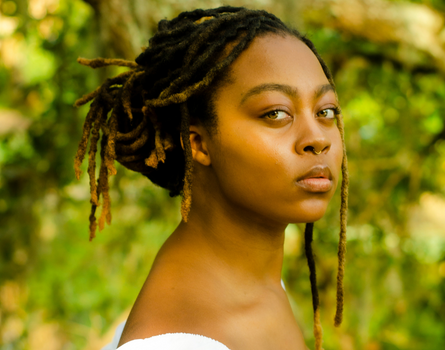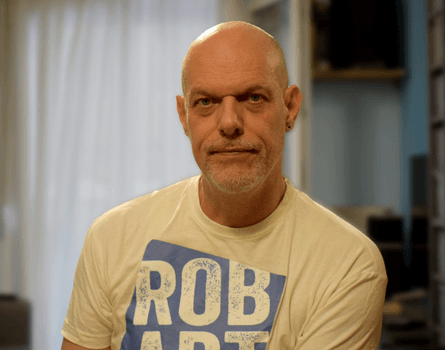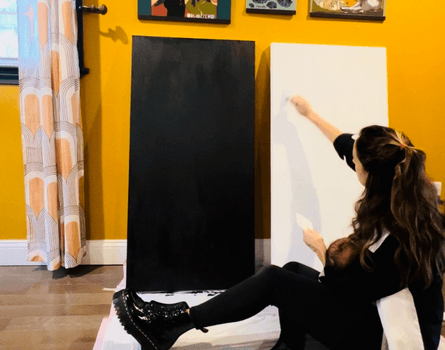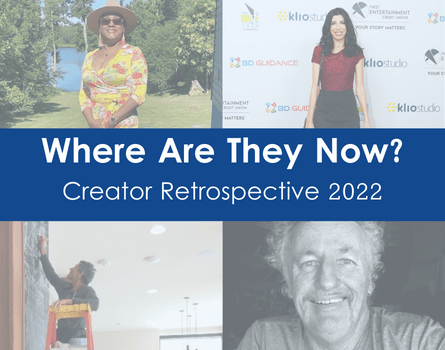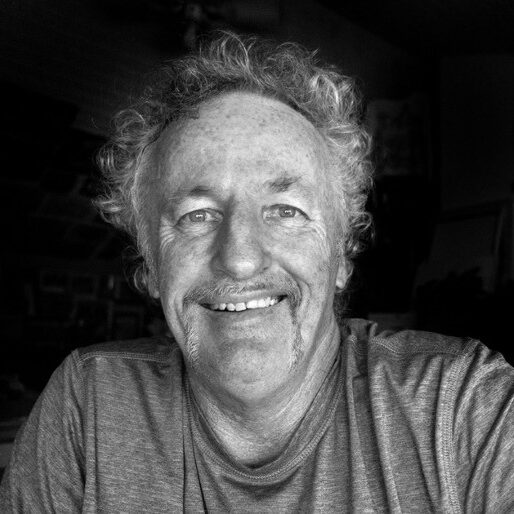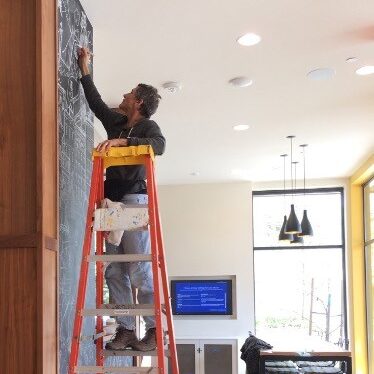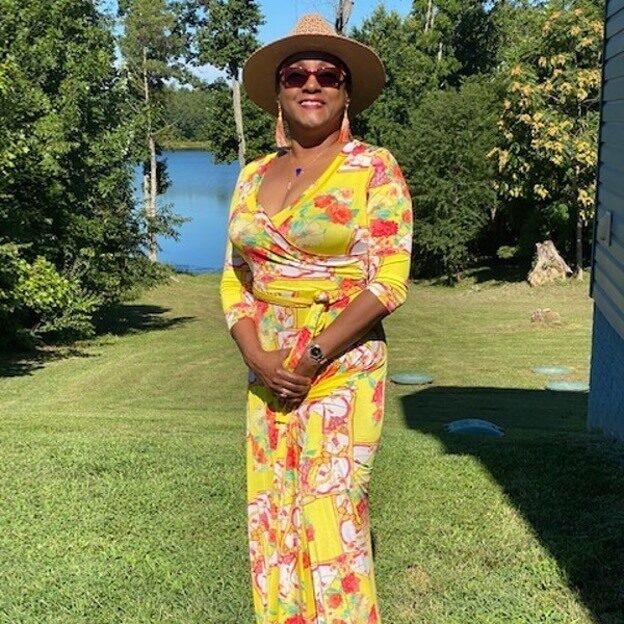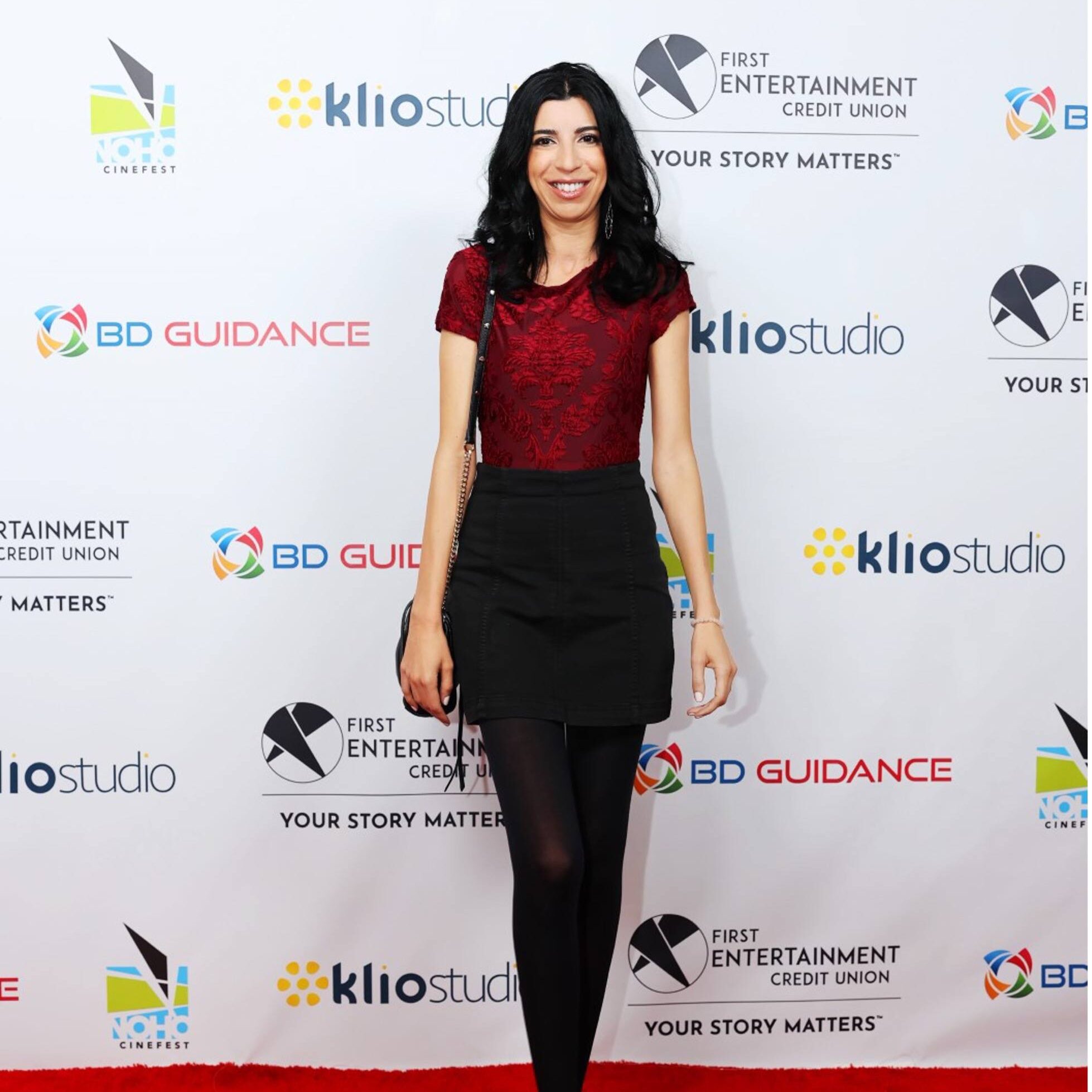We’ve interviewed many creators in our Creator Spotlight series over the years, and we love watching their journeys as their careers develop. This year, we’re catching up with a few creators who continue to create and protect their exceptional work through copyright as they discuss their paths, developments, and advice to others.
To read more retrospective creator stories, check out our 2021 Where Are They Now? Creator Retrospective Part 1 and Part 2.
Sean Davey
Sean Davey is a Nature Photographer and Fine Art Printer. Sean participated in the Copyright Alliance’s creator spotlight series back in July 2017. Follow Sean on Instagram, Vero, and Facebook to see what he’s up to.
How has your creative career evolved since we last spoke, and how has copyright helped to fuel your growth?
I’m not sure when we last spoke, but it’s been a while. I’ve seen a lot of changes during that time. I’ve moved away from photographing for magazines almost entirely, to now photographing art photography for my own business which I hand-print prints and canvas for, up to giant sizes as large as 120 x 44 inches on a single print.
I only sign those pieces which I create with my own hands, and I only use premium Epson papers, exhibition canvas and Surecolor inks for perfect museum worthy creations.
I provide an individually customized certificate of authenticity with each print which helps to maintain its value. Ultimately, I endeavor to provide as much value, quality, and supreme customer service that I can to those who purchase my art prints. I truly appreciate each and every client for in most cases, they are buying one of my prints to beautify their own home. I respect that deeply and am committed always to making the client the absolute best creation that I can, each and every time.
There is a supreme amount of satisfaction in being able to create not only for myself, but for folks who want to hang my art prints in their homes. It’s all creativity. I also have the added advantage of not having to put my © copyrighted images out into other people’s hands, to be printed. By printing them myself, I avoid this aspect of the equation.
If you could pass on one piece of advice to other creators, what would it be?
Over the past 20 years, things have changed so much and changed again, just as they will continue to do so. I went from being a globe-trotting magazine photographer, shooting film, to shooting digital photography, to seeing most of the magazines close, to turning to social media to get my imagery out there, while building a business, printing my own extra-large premium prints and canvas.
You have to be able to adapt to an ever-changing landscape. It often means learning new things or changing the way you do things, in order to become either more efficient or more attractive to a potential client. Don’t close your mind to doing things differently. It could even be a matter of adapting to a changing market, like in a recession. What I did during the 2009 recession was I simply concentrated on marketing my larger more expensive creations because I knew that folks with dollars were most likely among the only ones purchasing art at that time.
You have to watch what’s going on and try to stay ahead of others who will also follow trends. If you are onto something good, you’ll have probably a year or two before a lot of people are doing the same thing. You always have to pay attention to what’s going on around you and always be ready to try new things, new ideas, new ways to go about doing stuff. Always be ready to adapt.
Cindy Salans Rosenheim
Cindy Salans Rosenheim is an illustrator. Cindy participated in the Copyright Alliance’s creator spotlight series back in April 2018.
How has your creative career evolved since we last spoke, and how has copyright helped to fuel your growth?
Hello again and welcome to an illustrator’s life come full circle!
When we “met” four years ago I recounted how I started my career by stumbling into a massive job — creating a surround mural for a hotel restaurant in Houston. I knew how to draw (my mother was a painter and grandfather, an architect) but I had resisted going to art school.
Terrified, I accomplished one of the biggest jobs I was to take on in ensuing years as a professional illustrator. The new hotel PR manager had me work during restaurant hours and “dress the part” with a beret and kerchief. No kidding. This was 1977.
I then worked at Hallmark Cards, and later with a group of textbook illustrators, which led to trade books for kids.
Greeting cards, magazine illustrations and various print and then chalkboard commissions followed.
Around the time I wrote my first blog for the Creative Spotlight in 2018, I was surprised with another large mural job — a chalkboard wall, 10 feet high, for the lobby of a new condo building in Silicon Valley. Ladder work.
And today I’m illustrating two 11-foot chalkboard walls for the Ferry Building in San Francisco. Since I’m no spring chicken, I’m hoping it will be my last ladder gig!
So, the mural thing has unexpectedly come back to characterize the latter part of my career.
In 2019 I picked up an agent who, among other things, answered a call for a fashion sketch artist to quick-draw “high fashion” portraits of shoppers at point of purchase. I was the featured attraction at Ferragamo for two years. And I booked a few commercial acting jobs (a side career) along the way. So, while business lagged a bit during the Pandemic, many of the jobs I did get involved getting myself out there — be it publicly chalking from a ladder, whipping off portraits in a luxury store or showing up for acting shoots. I’m not sure what to make of that except to say that maybe that first big Houston mural performance job was an omen for what was eventually to come. A full-circle theme.
If you could pass on one piece of advice to other creators, what would it be?
As to copyright protection, it’s a no brainer, folks. All artists should register their works with the U.S. Copyright Office. Years ago, before I knew about copyright law, my husband found online a reproduced version of an illustration I had done for Ravensburger Puzzles. The reproduction was blown up fifteen-fold and painted on the side of a library in a town in Arizona. It was poorly painted, but it was also a total rip-off of my intricate design. It shocked me into realizing that you never know where your hard-earned handiwork may show itself under someone else’s name.
As to advice to fellow artists, I urge you to take on a job even if it seems beyond you or not up your alley. The first rule of improvisational acting is to “say yes” in response to a fellow player’s spontaneous question. To say “no” is to stop the conversation in its tracks. In improv, “yes” keeps the comedy bit moving into uncharted territory. Say “yes” to challenges. Your professional life is an active conversation, and if you keep it going you will find that surprise, perhaps terror, but also delight await you!
Vicki Kelly
Vicki Kelly is an author. Vicki participated in the Copyright Alliance’s creator spotlight series back in March 2021. Follow Vicki on Facebook and LinkedIn to see what she is up to.
How has your creative career evolved since we last spoke, and how has copyright helped to fuel your growth?
Since I was last interviewed back in 2020, I have published my second book: 2021—A City in the Sand—The Lost Years and 2022—A City in the Sand—The Beginning. So, I have completed the trilogy of this book series. I have also been doing book signings in all the local Fredericksburg area libraries. I have a Barnes and Noble book signing scheduled for October 29, 2022, in Fredericksburg, VA.
It is important to have your work protected! Right after I publish a new book, I go right to my favorites and fill out the copyright paperwork online.
I have a new book coming in the Spring of 2023!
If you could pass on one piece of advice to other creators, what would it be?
Whatever you do, don’t give up your dreams! I had always wanted to write a book and never thought I would be able to do it at 60 years old! And now I am on a roll. Stay positive.
Katie Garibaldi
Katie Garibaldi is a Singer/Songwriter. Katie participated in the Copyright Alliance’s creator spotlight series back in August 2017.
How has your creative career evolved since we last spoke, and how has copyright helped to fuel your growth?
My career has actually evolved quite a bit since we last spoke in 2017. Back then, I was doing music as a full-time singer/songwriter. Around that time, in addition to touring and recording my music, I also started attending international film festivals due to the success of my music videos that were selected to screen. I met tons of filmmakers and grew interested in how I could become a resource for filmmakers who needed music for their productions and bridge the gap between filmmakers and music creators.
I’ve always been fascinated by the art of music supervision, but being so busy with my music, it was hard to take on anything else. However, with the lockdown time in 2020, I wasn’t able to tour so I considered it the right time to study supervision and shift more into the filmmaking side of the industry. In doing so, I unexpectedly ended up writing and directing my own short film, This and That, which is set to premiere in Los Angeles at the North Hollywood CineFest in September. I also supervised the film’s music, licensing various music pieces, collaborated with a composer for custom scoring, and even wrote some of my own music for the film as well. So, it’s basically a whole pot of my creativity melted into one project, which I’m so proud of!
Now, I have pretty much found a new path in my career that combines my love of music and film with my business Owl At The Moon Creative, mostly supervising and coordinating music for film. I also work closely on select projects with the collaborative scoring group Sum Of All Music.
Copyright is an extremely important part of music supervision, as I’m constantly researching the information on music rights owners. In order to license a piece of music for a film, I need to know the publisher(s), and be able to negotiate agreements based on the desired terms of the production. Having the correct copyright information for music is imperative for securing a sync license for placement. Coming from a songwriter’s background has really helped me with how to best communicate with other artists and filmmakers when supervising agreements so that all parties have clarity and ease when navigating the post-production process.
If you could pass on one piece of advice to other creators, what would it be?
Something I’d pass on is the importance of taking the time and care to have your business ducks in a row that coincide with your creative project. Sometimes as creators I think we can isolate ourselves in our creativity. But once our projects are ready to be shared outside of our bubbles, we must be ready to respond quickly and professionally to opportunities that show up for us. I can’t tell you how many times I’ve received music from artists without any metadata on their tracks. So, if a film comes along down the line that I think their music might work well for, I can’t even contact them because there is no information on their tracks. I’ve also been surprised to find that a lot of filmmakers/producers don’t know how to make and submit a proper cue sheet. When supervising a production, I like to help the producer with the cue sheet because I always advise they get it done sooner than later in case anything gets picked up for streaming or distribution. But sometimes they don’t even know what a cue sheet is. This is a critical asset for performance rights organizations to be able to pay royalties to composers and songwriters who have music placed in a show or film.
A lot of times, so much work goes into a production (whether it be music or visual media), that a lot of creators will start to misstep in, what I like to call, “post post-production”—the time after a project is complete and it’s now a phase of communicating with a whole new slew of collaborators to deal with your art in the public arena. We must value our creativity at the highest level of care it deserves if we believe in the worthiness of our goals and dreams. It’s our responsibility as creatives to educate ourselves on the business side of the industry if we are putting our work out there to make deals and work with other professionals. Certain things, like a cue sheet, can be intimidating when doing it for the first time, but the best way to learn how to do something is to just do it. Take your journey into your own hands and give it all you’ve got. Creativity is inspiring and exciting, however, no amount of talent can override poor professional skills when trying to complete contracts and projects. Nothing is more refreshing than working with people in this industry who are respectful, quick to respond, attentive to detail, professional, and most of all, kind and gracious.
Want to learn more about the incredible creators we’ve featured in the past? Check out our archive of more than 100 previous creator spotlight blogs! To be featured in your own creator spotlight blog, join the Copyright Alliance as an Individual Creator Member and email us at cawebsite@copyrightalliance.org.






